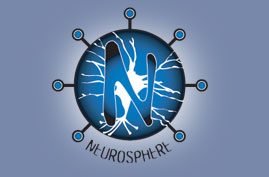Neurotechnology Innovation
Personal Infrastructure
Interesting and broad review of neural interface research.
“Neural interfaces have emerged as effective interventions to reduce the burden associated
with some neurologic diseases, injuries, and disabilities. The 2005 Neural Interfaces Workshop was convened to discuss recent advances and future opportunities for neural technologies….areas of interest include functional neuro- muscular stimulation (FNS), auditory prosthesis, cortical prosthesis, microelectrode array technology, and logy, and brain computer/machine interfaces. “
http://www.nibib.nih.gov/nibib/File/News%20and%20Events/Previous%20Symposia%20and%20Workshops/Neuromodulation%202005%20Final%20Report.pdf
“Numenta is developing a new type of computer memory system modeled after the human neocortex. The applications of this technology are broad and can be applied to solve problems in computer vision, artificial intelligence, robotics and machine learning.”
http://www.numenta.com/
“The $6-million eel it ain’t. But researchers who have taken the unprecedented step of connecting a brain, in this case a sea lamprey’s brain, to a small mobile robot say they’ve got a roving fishbot that may someday lead to better prosthetic devices for humans.”
http://www.sciencenews.org/articles/20001111/fob4.asp
“The first PHANTOM® haptic device was designed and built in the early 1990s by Thomas Massie and Dr. Kenneth Salisbury. Massie, an undergraduate student at MIT at the time, and Dr. Kenneth Salisbury, then a principal research scientist at MIT’s Artificial Intelligence Laboratory, worked together to combine robotic and haptic technologies to “reach into the computer display” and touch and manipulate 3D data. What began as a thesis project was validated when demand for the PHANTOM device began to spread through MIT and the research communities of other leading institutions. SensAble™ was formally incorporated in 1993.”
http://www.sensable.com/company/aboutus.asp
